
It allows to keep PV going, with more focus towards AI, but keeping be one of the few truly independent places.
-
@Swiss_Boy zero difference between FCP X "optimized media" which transcodes at ProRes422 and FCP7 422, according to the parameters set forth in the video test.
BUT make sure you actually select "optimized media" otherwise, instead of ProRes, it converts AVC1 which looks like crap, and that's what I was looking at when I said X was worse than 7. You get AVC1 H264 files if you don't check any of the boxes for Optimized or Proxy, so watch out for that.
-
First off, thank you for looking into this. Been doing some comparisons myself in FCPx the last couple of days. Mostly in ProRes 422. 5DtoRGB definitely cleans up/smooths out the reds in comparison to the MTS file and even the FCPx render. Really apparent if one pushes the color saturation and blows up the image. In most practical cases it seems to be a minor but real improvement over FCPx.
One thing I am curious about is the issue of using full range luminance vs. broadcast. I did a simple experiment in FCPx. Two different shots. One a contrasty outdoor scene. The other a low contrast interior. Imported several versions of both shots (MTS and various ProRes 422...FCPx, 5DtoRGB Broadcast (at gammas 1.0, 1.1, 1.2, and 1.4), then 5DtoRGB at Full luminance.
I then sequenced them in the timeline just as I listed them above. Opened the Luma video scope and skimmed through the shots. In both shots, the first three (MTS, FCPx, and 5DtoRGB Broadcast at default gamma of 1.0) all looked the same and had virtually identical readings on the luma chart. Moving through the shots as the gamma adjustment goes from 1.1 to 1.4, the top end limit of the luma remains pretty much the same while the shadows at the bottom are lifted progressively with each increase in gamma. Visually, shadows open up and more detail in those areas is obviously revealed. Then finally, the 5DtoRGB at Full luminance shot shows a much flatter looking image, with luminance values obviously in a significantly more narrow range. Especially in the lower contrast scene where it looks totally washed out.
So, broadcast seems to be what the camera is spitting out (luminance in MTS=FCPx=5DtoRGB at Broadcast). Why would it be advantageous to have those luma values remapped to a narrower range during the encode only to be remapped again with another adjustment in a color correct to add contrast? In the test that was done, Full does retain more detail than Broadcast. But maybe that's because of the pretty severe S curve added to the footage. The curve squashed the top and bottom of the luminance range where Broadcast had quite a bit of information and Full had very little.
What would happen if you did a pretty straightforward grade of both so they looked the same by creating a well-balanced scene with good balance and detail across the whole luminance range? This is where most of the colorists I've worked with start. Seems like that would be the fair comparison.
So, I started doing just that. I stacked different versions of the clips and color corrected them to what I consider a good, balanced scene. It's amazing how with just one or two exposure adjustments in FCPx, you can bring all the different encodes very close to one another. The question then becomes, where is it best to have the math done…in the original encode or in the color correct? Will look more closely at comparing this and other footage over the next couple of days to reach a more definitive conclusion, but, intuitively it seems like the less math that's done on the footage, the better.
-
I think MTS files have frames already in "log" and broadcast luma range. When FCPX displays MTS frames on the computer screen, it applies gamma 2.2 by default which makes the frames "linear". In 5DtoRGB, setting to 1.0 gamma and full luminance preserves the original log info which helps push more color-grading without introducing weird artifacts.
I could be utterly wrong about that. Please correct me if I'm wrong.
-
Does anyone have a batch script that will work with the 1.5.8 Lite (Mac) version? The one I tried from earlier in this thread doesn't work with it.
Thanks
-
@shian ok cool but i think i will need 5DtoRGB anyway because i'm not sure if fcp x will import HBR 25p and recognize it as p and not i. Also i read in your thread your workflow and it's very interesting but how would you import a fcp x project in AE to grade? XML? And if your client ask you to change a part of the edit after your graded, you will go back to fcpx to change it ? I am a premiere pro user but i started to like fcp x really and i might stick to it but maybe not for grading, just for editing.
-
@Swiss_Boy that is why we have things called "change orders" with every client I have as a freelancer, they sign a contract that says at the end of the edit process they will "sign off" literally on the edit, usually by email confirmation form the project lead, before moving on. If for any reason they want to go back and change something they have to pay a "change fee" which is steep. But it's also the secret to making money in this biz, and not letting clients drive you crazy. Because if you don't you will eventually grow to hate your clients because clients usually have no fucking clue what they want, and lack the skills to communicate it even when they do know.
There are many ways around having to start over. One is to go back, make the changes, re-export xml, and only grade the changes that were made. Take both master timeline and place them in one comp, and do a quick 3 point edit. I'll try to do a tutorial on this.
-
@shian so you can import xml in AE? Because i searched for that and did not find. And i used to do agreement that was saying that they have to agree with grading first then i was exporting from AE to PPro to edit so i was grading first this might be strange and not the best workflow but it worked for me.Especially for music videos thats heavily graded cause you might edit a lil different if it's already graded.
-
@Swiss_Boy you are using PP? Then when I say xml, just think. "import PP project". XML is for the rest of us NOT using PP.
And with FCPX you need to get xto7 and 7tox to use the AE XML workflow. export fcpxml > import to FCP7 using xto7 > then export from FCP7 to XML > import into AE using Automatic Duck.
But with FCP7 and Vegas and automatic duck (a free program) you can absolutely import an XML or AAF into AE.
-
@bug009 Great questions all around. I'll have to do more testing, and maybe consult some of the engineers over at reliance on that. But so far the math coming from 5DtoRGB and into full range encodes gives me footage that is similar to what I'm used to with film, R3D, and Alexa. Maybe that works for you, maybe it doesn't.
My feeling is it is always better to have huge computers with tons of processing power, and more complex software handle the calculations than what will fit inside the camera.
-
@shian yes i'm using premiere pro but i will probably switch to fcpx cause i really start to like the timeline,sync and multicam.
-
(EDIT) This comparison was severely flawed. What I inadvertently posted was an interlaced vs progressive comparison. Please disregard the rest of the post. (/EDIT)
I really have to post this!
The 5DtoRGB samples I've seen in this post don't even tell half the story. This isn't just a RED channel issue. It is massive and it's all over!!! Loading straight MTS files into AE is an aliasing holocaust.
I loaded AE with a straight MTS file and the same 5DtoRGB default conversion. As soon as I switched between both of these zoomed at 200%, a lot of swearing came rolling out of my mouth. I'll have to recheck what my preview settings are on AE as the scaling might have some influence at 200%, but as I wrote before, on AE this is massive and is easily spotted even at 100%.
Check them out, the file size differences already speak for themselves. The amount of recovered detail is almost unbelievable and this is something that you would never recover on sharpening alone.
MTS file is here: http://www.mediafire.com/?zv67c1xnjonanr9
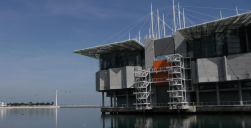
 MTS.png1725 x 881 - 994K
MTS.png1725 x 881 - 994K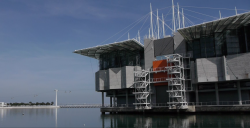
 5DtoRGB.png1725 x 882 - 1M
5DtoRGB.png1725 x 882 - 1M -
Yep I've said it before and I'll say it again. I would love to work in native MTS in the Adobe apps but there's just no comparison yet.
-
Ha, ignore me, I'm not thinking properly, again.
-
I don't know whether discussion about 5DToRGB is mostly Mac-based or there are some improvements on PCs as well? Namely, make the following script in AviSynth:
DirectShowSource("Name_of_your_video.MTS")
Then import it into VirtualDub. The red problems dissapear similarly as when using 5DToRGB. Note that you can adjust gamma and brightness range in AviSynth or VirtualDub if needed.
Please, DON'T import original MTS file directly into VirtualDub by using "DirectShow input Driver" under "Files of type" load option. You'll get back red problems.
So, is there any difference concerning aliasing/red problems between 5DToRGB and AviSynth - VirtualDub approaches?
By the way, something strange happens as well... The original clip and Avisynth-VirtualDub approach result in the same number of frames. On the other side, by using 5DToRGB approach, number of frames (reported in VirtualDub) is increased.
@Duartix, could you left somewhere the original MTS footage and HuffYUV created by 5DToRGB for testing?
-
@crunchy My report was on PC. The file can be downloaded here: http://www.mediafire.com/?zv67c1xnjonanr9
-
This isn't just a RED channel issue. It is massive and it's all over!!! Loading straight MTS files into AE is an aliasing holocaust.
Looks like AE is only displaying a single field in the case of the MTS file and both fields in the case of the MOV file created by 5DtoRGB. Since it’s a 29.97 fps clip, I assume the GH2 was in the HBR mode, so the resulting file is interlaced to begin with.
In any event, I’m not having your aliasing problem when I open your MTS file directly in QuickTime Player. I get something very close to your second snapshot (well, minus 5DtoRGB’s chroma blurring or whatever it does, naturally).
Can you force AE treat a clip as progressive?
-
@duartix Definitely better in 5DtoRGB - you can see much more clearly the edge of the roof with the sky behind. Just as a matter of interest, are there any export options in 5D to RGB and if so, which did you use?
-
Here is frame no. 40 of the video imported into VirtualDub via Avisynth script:
DirectShowSource("00000.MTS")
It seems quite OK. Also "reds" are more than OK.
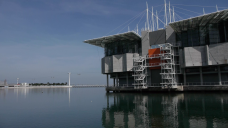
 Clipboard01_from_AVS.png1920 x 1080 - 1M
Clipboard01_from_AVS.png1920 x 1080 - 1M -
The sky in your picture has got lots of artifacts (top-left corner).
To be fair the 5DtoRGB picture shows artifacs too in the sky, but far less.
-
@bwhitz, can you upload your original mts clip as well in order to test it?
I made an experiment with one of my clips with GH1 taken as 50i (interlaced wrapper). I imported the clip into Sony Vegas MS and marked the clip as progressive. Then put it in the timeline and exported it by using loseless Lagarith codec. The results from sony are shown by the first two pictures (the first picture is there by mistake) denoted by SonyMSHDP.
I compared the results by importing the MTS clip directly into VirtualDub (by using "DirectShow input Driver" under "Files of type" load option) [the third picture denoted by "MTS"], by using 5DToRGB [the fourth picture, denoted by "5DToRGB"], and by importing AVS script into VirtualDub (similar script as one above) [the last picture, denoted by "AVS"]. The results are below (cropped part of the entire picture and resized 400% by Laczos filter). It can be seen that AVS and 5DToRGB route do not suffer from "chroma upsampling error"
Both AVS and 5DToRGB results seem similar (5DToRGB is more flat, but it might be made by AVS route as well) except that AVS footage is slightly sharper. Since sharpness is very important for me (3D), I'll probably keep AVS route. If anybody knows some other advantages of 5DToRGB over AVS route, let me know.
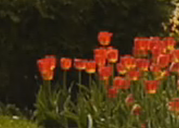
 Clipboard01_from_SonyMSHDP_d.png660 x 472 - 264K
Clipboard01_from_SonyMSHDP_d.png660 x 472 - 264K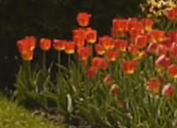
 Park_from_SonyMSHDP_d.png664 x 480 - 309K
Park_from_SonyMSHDP_d.png664 x 480 - 309K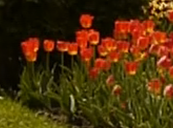
 Park_from_MTS_d.png660 x 488 - 311K
Park_from_MTS_d.png660 x 488 - 311K
 Park_from_5DToRGB_d.png700 x 480 - 306K
Park_from_5DToRGB_d.png700 x 480 - 306K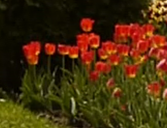
 Park_from_AVS_d.png648 x 496 - 296K
Park_from_AVS_d.png648 x 496 - 296K -
@rikyxxx, I haven't checked yet, but are you sure that this cannot be caused by "flatter" profile of 5DToRGB?
Ive checked it and the mentioned artifacts are present in 5DToRGB footage as well, only due to flat profile they are not so clearly visible. The artifacts can already be reduced when using reduced output luma range (16-235). Of course, with some other filters, it can be additionally improved.
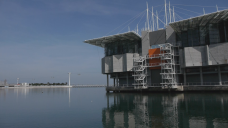
 C_5DToRGB02.png1920 x 1080 - 1M
C_5DToRGB02.png1920 x 1080 - 1M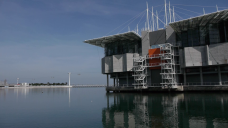
 C_AVS02.png1920 x 1080 - 1M
C_AVS02.png1920 x 1080 - 1M -
I'm not an expert in this field but I don't think so... Artifacts are artifacts.
EDIT: I've just noted that Duartix's pictures are smaler (1725x882px). That's maybe the reason why artifats looks less visible.
EDIT n2: Ok, I got what you mean by "flatter" (less contrasty, isn't it?). You may be right...
-
@Mark_the_Harp : I used the free 5DtoRGB 1.5.6b2 Preview (64bit) with defaults for everything (except for Full Range) on Luminance Range according to some settings posted by @shian.
@crunchy : Thanks for testing. Your VDub import through AviSynth looks almost on the same level as 5DtoRGB.
@Mr_Moore said : "#Looks like AE is only displaying a single field in the case of the MTS file and both fields in the case of the MOV file created by 5DtoRGB. Since it’s a 29.97 fps clip, I assume the GH2 was in the HBR mode, so the resulting file is interlaced to begin with."
You are absolutely right, it is!
@Mr_Moore said: "In any event, I’m not having your aliasing problem when I open your MTS file directly in QuickTime Player. I get something very close to your second snapshot (well, minus 5DtoRGB’s chroma blurring or whatever it does, naturally). Can you force AE treat a clip as progressive?"
Yes, I managed to do it. You were right on the money and it is a field issue as you mentioned. I created a progressive composition before importing and then I Interpreted the MTS asset by setting Separate Fields to Off and it looks a LOT BETTER. My problem was aggravated because I was also getting some of that contamination on my h.264 exports which I can't get rid off as of yet, but I'll start another thread for that.
(EDIT) Just rechecked the imports and now the same properly interpreted MTS file looks indistinguishable from the 5DtoRGB conversion...
-
Interesting - having seen the difference in your files when imported into Sony Vegas, and then gone back and dealt with the interlace issue, I then found the same thing, no difference.
Just to check further though, I played around in both Sony Vegas and in AE with one of my own MTS files, a very detailed clip with highly saturated graphic colours,comparing it with the same clip imported via 5DtoRGB and I could detect no difference between the native MTS and the 5DtoRGB import in either Vegas or AE.
Although my copy of 5DtoRGB (windows x64) will only convert one file and then creates huge .mov files with no video (only audio). Don't know what's happening there but that's a side issue. I've probably got a corrupt install, or it doesn't like the files Cake produces, or something.
But when I get it to work for me, 5DtoRGB is useful for certain applications that don't work natively with .mts, and it's pretty quick to convert. I'm thinking here of the original verion of Speedgrade NX, which won't look at mts files hence they need to be converted first to import into that particular software.
-
Sorry if this was reviewed before, but... is there an advantage of 5DtoRGB vs Cineform transcoding of the original MTS files?
Thanks.
Howdy, Stranger!
It looks like you're new here. If you want to get involved, click one of these buttons!
Categories
- Topics List23,990
- Blog5,725
- General and News1,353
- Hacks and Patches1,153
- ↳ Top Settings33
- ↳ Beginners256
- ↳ Archives402
- ↳ Hacks News and Development56
- Cameras2,366
- ↳ Panasonic995
- ↳ Canon118
- ↳ Sony156
- ↳ Nikon96
- ↳ Pentax and Samsung70
- ↳ Olympus and Fujifilm100
- ↳ Compacts and Camcorders300
- ↳ Smartphones for video97
- ↳ Pro Video Cameras191
- ↳ BlackMagic and other raw cameras116
- Skill1,960
- ↳ Business and distribution66
- ↳ Preparation, scripts and legal38
- ↳ Art149
- ↳ Import, Convert, Exporting291
- ↳ Editors191
- ↳ Effects and stunts115
- ↳ Color grading197
- ↳ Sound and Music280
- ↳ Lighting96
- ↳ Software and storage tips266
- Gear5,420
- ↳ Filters, Adapters, Matte boxes344
- ↳ Lenses1,582
- ↳ Follow focus and gears93
- ↳ Sound499
- ↳ Lighting gear314
- ↳ Camera movement230
- ↳ Gimbals and copters302
- ↳ Rigs and related stuff273
- ↳ Power solutions83
- ↳ Monitors and viewfinders340
- ↳ Tripods and fluid heads139
- ↳ Storage286
- ↳ Computers and studio gear560
- ↳ VR and 3D248
- Showcase1,859
- Marketplace2,834
- Offtopic1,320











